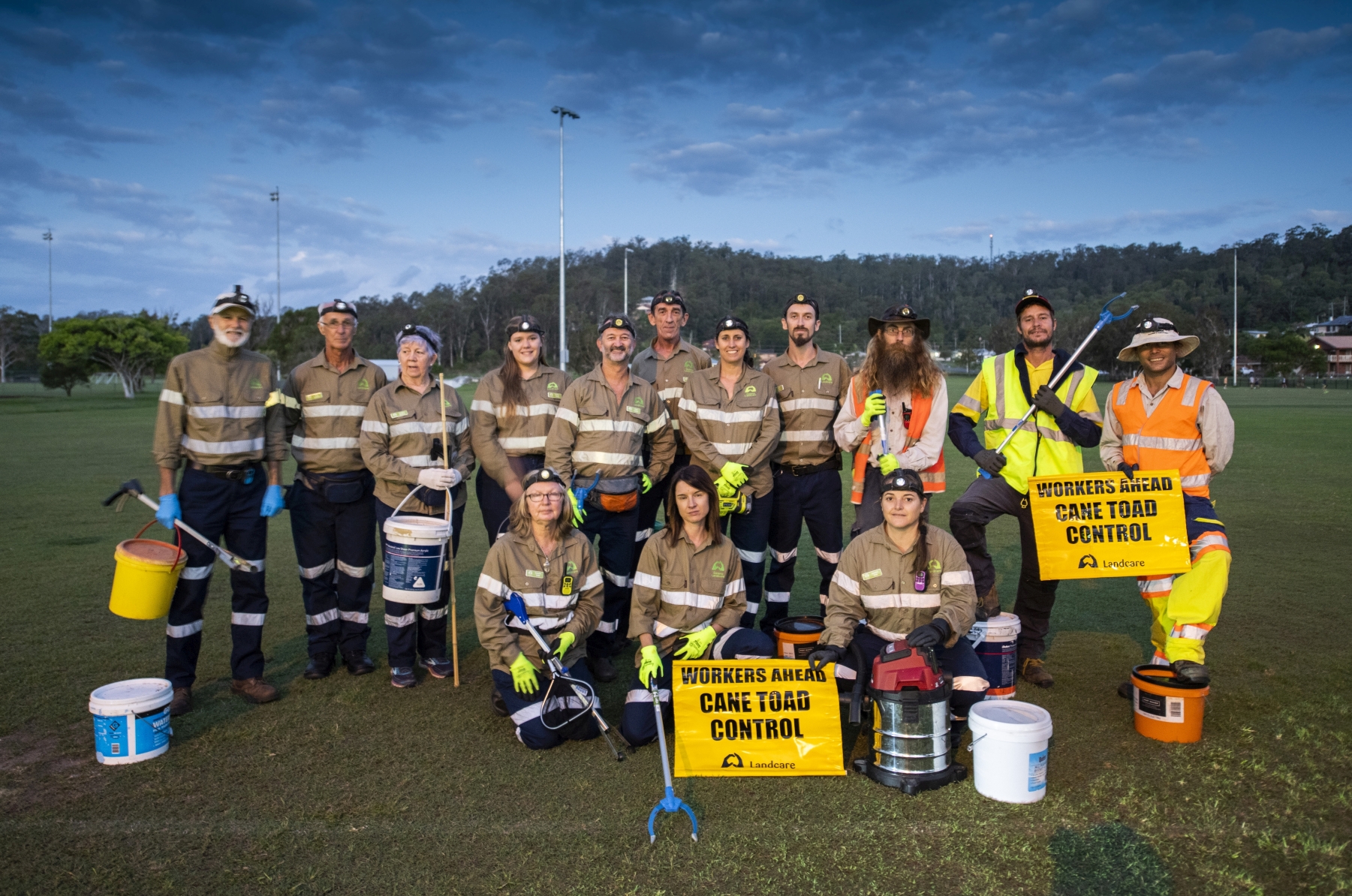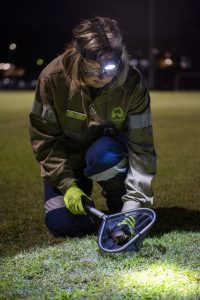Clarence Landcare Cane Toaders are on the frontline aiming to eradicate cane toads south of the Clarence River to push back their southern front and also to contain their spread north of the river.
Funding has been obtained from the Office of Environment and Heritage via the Department of Primary Industry’s Special Purpose Pest Management fund to include control on private lands and to engage landholders; for distribution research and for a public awareness campaign to increase detection and reporting.
To date 50 additional property holders have come on board to allow access for collection. Over the last three months Clarence Landcare Cane Toaders have spent 230 collector nights catching 46,838 toads. With 5,135 of juvenile size or above captured, it is anticipated that a significant reduction of breeding will occur in the coming season at sites with active collection.
Captured toads are humanely euthanised by refrigerating, then freezing, and disposed of in green waste bins. Mature toads are captured with litter pickup tools and scoop nets while tadpoles and small juveniles are sucked up with a portable wet/dry vacuum machine, unharmed to double check there are no native frogs or insects, before they are humanely disposed of. Collectors wear protective gloves, clothing and gumboots.
While drought conditions kept toad numbers lower, recent rains have seen them on the move and breeding again.
Be careful not to confuse native frogs for cane toads. For assistance with cane toad and native frog identification download the free Cane Toad and Frog ID app at: Frog ID
Male cane toads usually call on hot, humid summer nights. To listen to a cane toad call go to:
Cane Toad call

